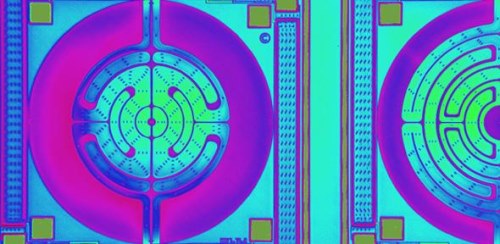Your trips to the doctor’s office followed by a series of pokes, prods, and experimentation with different medications in search for a diagnosis of your illness could one day come to an end. One company has begun developing a device that will test your breath and reveal your diagnosis.

(Image via Department of Public Health)
A Cambridge University Department of Engineering spin-out company, Cambridge CMOS Sensors (CCMOSS), has developed an infrared emitter that can identify more than 35 biomarkers present in exhaled breath in concentrations as low as one part per million. This technology is being developed for use in a non-invasive medical testing device.
How it works
When we exhale, we release nitrogen, oxygen, and carbon dioxide, as well as thousands of chemical compounds in every breath. These chemical compounds can reveal a lot about what’s going on inside our body. Some examples of what are called “biomarkers”: an elevated acetone level can indicate poorly controlled diabetes; high levels of nitric oxide can reveal that someone suffers from asthma; and glucose in the breath is a sign of kidney failure.
The technology developed by CCMOSS uses broadband infrared radiation, which makes it possible for just one device to test for a wide range of biomarkers.
The device uses miniature heaters called micro hotplates and can be heated from room temperature to about 1,300 degrees Fahrenheit in just a fraction of a second. This temperature is high enough to produce infrared radiation and allows the sensing material to react with gas molecules exuded from a person’s breath.

Micro-heating element with integrated CMOS electronic driver and temperature sensing circuits. (Image via Cambridge CMOS Sensors)
What makes this method of detection work is that many gas molecules actually absorb infrared, but the amount of radiation absorbed is actually the key to identifying the individual gas and its concentration to be calculated (similar to a breathalyzer administered by a police officer).
Building on this technology, CCMOSS created a more sensitive gas-sensing technology that can detect wavelength between two and 14 microns that correspond to different biomarkers. A filter is applied to the top of the detector which allows only infrared radiation of a particular wavelength to get through.
Benefits
The device uses complementary metal-oxide semiconductor (CMOS) technology. This kind of low-power semiconductor is commonly used in microprocessors and battery-operated devices. Using this kind of equipment, the devices can be produced in larger quantities at more affordable prices than the kinds of sensing devices being developed currently.
Other breath analysis tests being created currently use mass spectrometry to lasers to analyze the breath for specific compounds and are less effective because they can only detect a small range of compounds. In these cases, you would need a different device for each compound you were testing for.
Future Outlook
“Non-invasive breath analysis is an area of great potential for diagnosing and monitoring a wide range of medical conditions. Testing is easy and painless, and can be repeated as often as needed,” said Professor Florin Udrea of the Department of Engineering and CCMOSS’ CEO.
The company also plans on developing its technology for use in consumer electronics, industrial security, and automotive applications.
Story via University of Cambridge.
Advertisement
Learn more about Electronic Products Magazine





